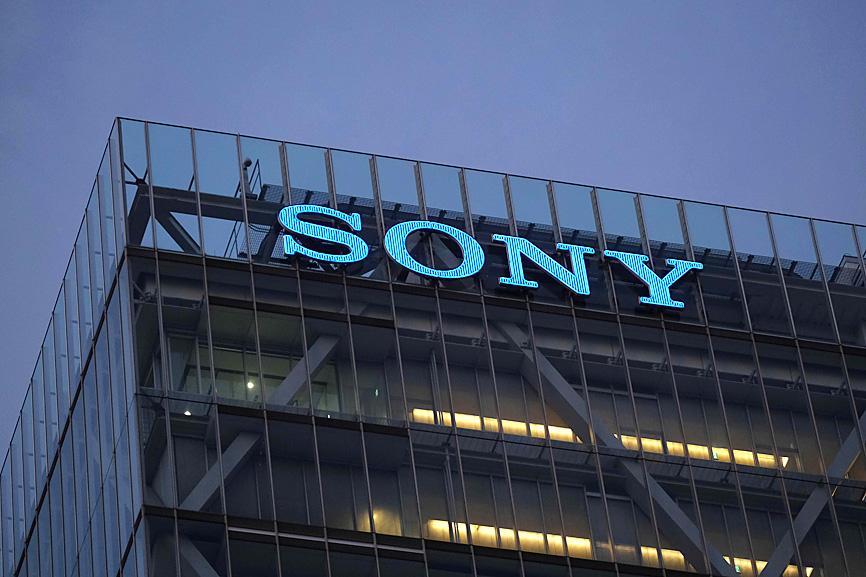Sony Corp is to buy AT&T Inc’s animation business Crunchyroll for US$1.175 billion, the two companies said yesterday, as the Japanese electronics conglomerate aims to beef up its entertainment content and distribution businesses.
The deal would give Sony access to Crunchyroll’s 3 million paying subscribers across more than 200 countries and regions, helping Sony compete more globally with entertainment giants such as Netflix Inc.
Sony’s Funimation Global Group, a US animation distributor with 1 million paying subscribers, would own Crunchyroll, currently part of AT&T’s WarnerMedia segment.

Photo:AFP
AT&T has been looking to monetize its non-core assets since CEO John Stankey took over in June. The latest deal would allow it to invest in other focuses of WarnerMedia, including content creation and gaming.
Despite Crunchyroll’s loyal following among anime fans, AT&T felt the anime streaming service was too niche for the broader audience its streaming service HBO Max wants to pursue, a source familiar with the company said.
The proceeds are to be paid in cash at closing, AT&T and Sony said.
Sony is boosting gaming and entertainment businesses under CEO Kenichiro Yoshida’s strategy to increase recurring revenue streams that cushion the impact of volatile hardware sales cycles.
Sony bought Funimation in 2017 for about US$143 million.
The animation business has been thriving recently on the record-breaking success of the Japanese animated film Demon Slayer — codistributed by Sony’s music unit Aniplex Inc.

Taiwan’s long-term economic competitiveness will hinge not only on national champions like Taiwan Semiconductor Manufacturing Co. (TSMC, 台積電) but also on the widespread adoption of artificial intelligence (AI) and other emerging technologies, a US-based scholar has said. At a lecture in Taipei on Tuesday, Jeffrey Ding, assistant professor of political science at the George Washington University and author of "Technology and the Rise of Great Powers," argued that historical experience shows that general-purpose technologies (GPTs) — such as electricity, computers and now AI — shape long-term economic advantages through their diffusion across the broader economy. "What really matters is not who pioneers

In a high-security Shenzhen laboratory, Chinese scientists have built what Washington has spent years trying to prevent: a prototype of a machine capable of producing the cutting-edge semiconductor chips that power artificial intelligence (AI), smartphones and weapons central to Western military dominance, Reuters has learned. Completed early this year and undergoing testing, the prototype fills nearly an entire factory floor. It was built by a team of former engineers from Dutch semiconductor giant ASML who reverse-engineered the company’s extreme ultraviolet lithography (EUV) machines, according to two people with knowledge of the project. EUV machines sit at the heart of a technological Cold

TAIWAN VALUE CHAIN: Foxtron is to fully own Luxgen following the transaction and it plans to launch a new electric model, the Foxtron Bria, in Taiwan next year Yulon Motor Co (裕隆汽車) yesterday said that its board of directors approved the disposal of its electric vehicle (EV) unit, Luxgen Motor Co (納智捷汽車), to Foxtron Vehicle Technologies Co (鴻華先進) for NT$787.6 million (US$24.98 million). Foxtron, a half-half joint venture between Yulon affiliate Hua-Chuang Automobile Information Technical Center Co (華創車電) and Hon Hai Precision Industry Co (鴻海精密), expects to wrap up the deal in the first quarter of next year. Foxtron would fully own Luxgen following the transaction, including five car distributing companies, outlets and all employees. The deal is subject to the approval of the Fair Trade Commission, Foxtron said. “Foxtron will be

INFLATION CONSIDERATION: The BOJ governor said that it would ‘keep making appropriate decisions’ and would adjust depending on the economy and prices The Bank of Japan (BOJ) yesterday raised its benchmark interest rate to the highest in 30 years and said more increases are in the pipeline if conditions allow, in a sign of growing conviction that it can attain the stable inflation target it has pursued for more than a decade. Bank of Japan Governor Kazuo Ueda’s policy board increased the rate by 0.2 percentage points to 0.75 percent, in a unanimous decision, the bank said in a statement. The central bank cited the rising likelihood of its economic outlook being realized. The rate change was expected by all 50 economists surveyed by Bloomberg. The